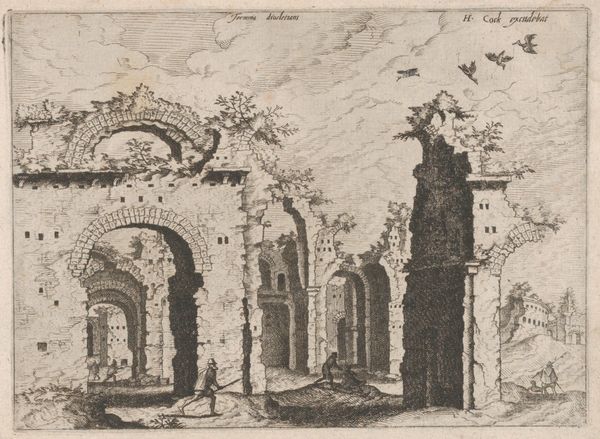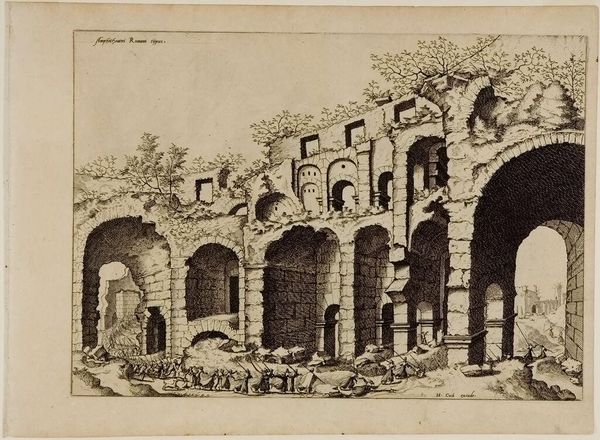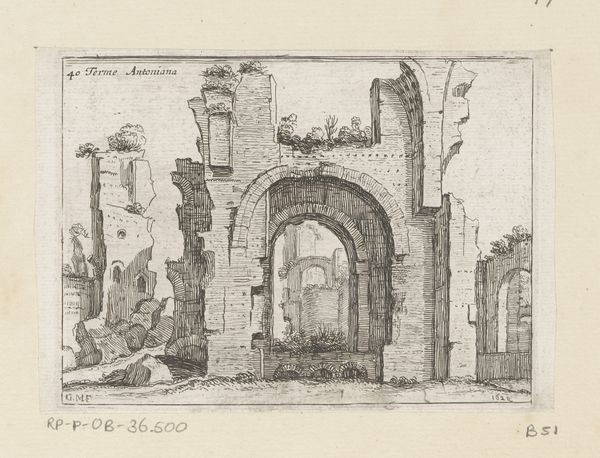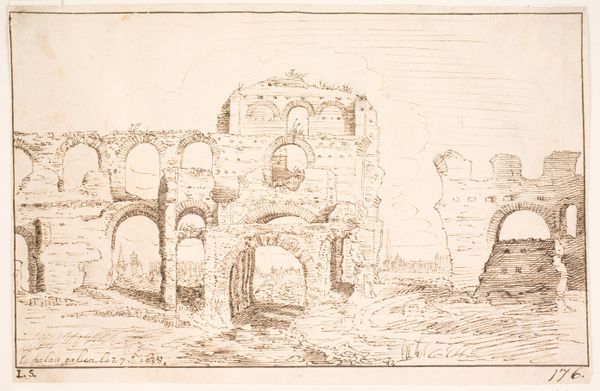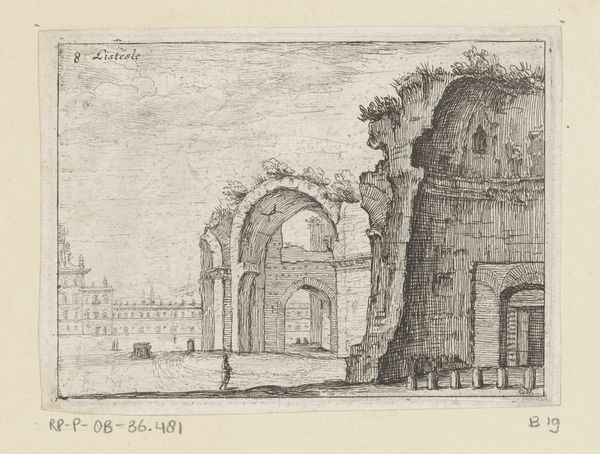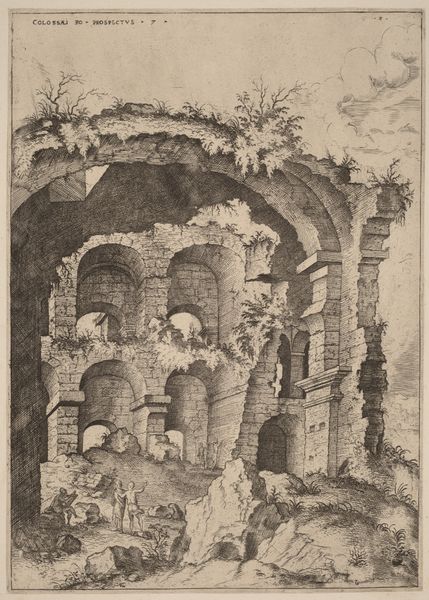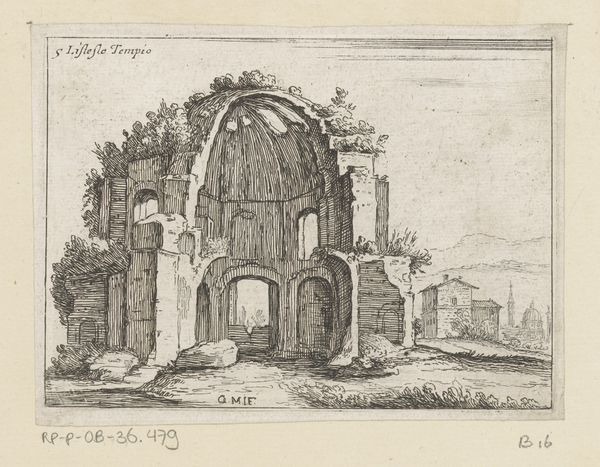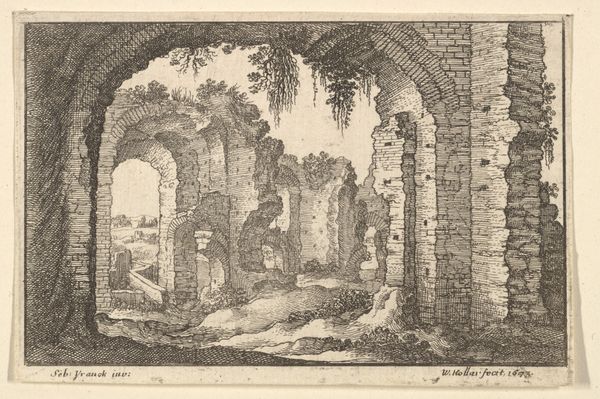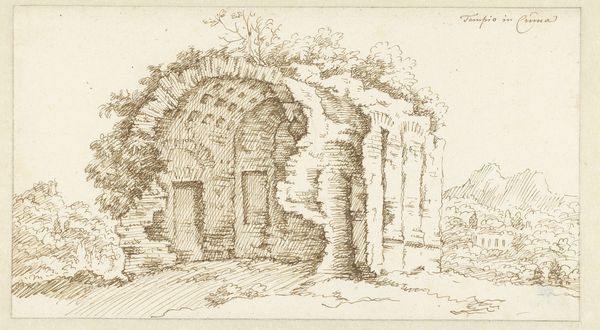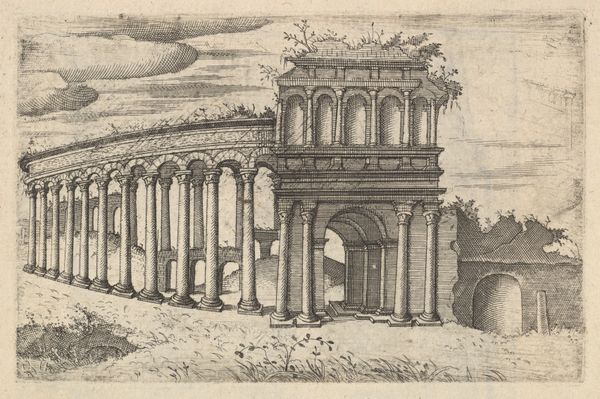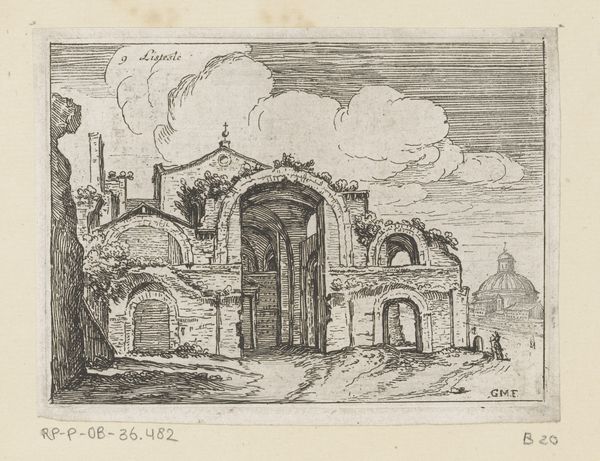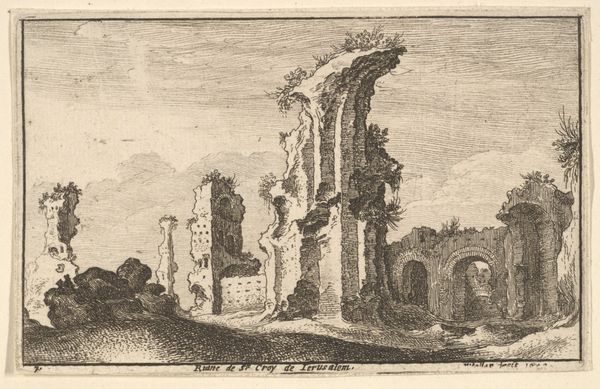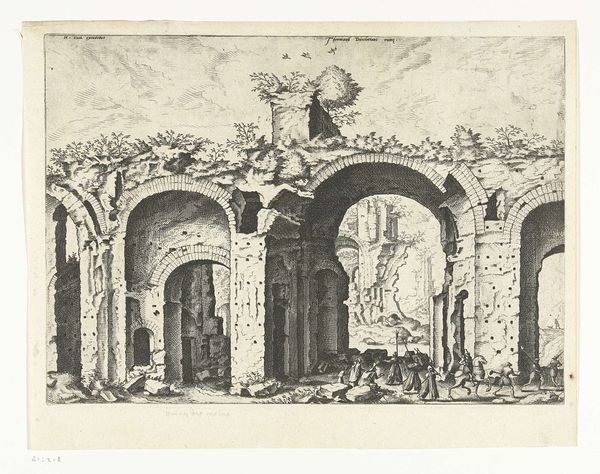
print, etching, architecture
#
baroque
# print
#
etching
#
landscape
#
architecture
Dimensions: height 95 mm, width 129 mm
Copyright: Rijks Museum: Open Domain
Curator: This etching by Giovanni Battista Mercati, created in 1629, is titled "Resten van het Colosseum te Rome," or "Remains of the Colosseum in Rome." Editor: What immediately strikes me is the delicate rendering of texture – the rough, crumbling stone of the Colosseum contrasts so wonderfully with the softer, almost organic forms of the overgrowth. Curator: It speaks to the baroque aesthetic fascination with ruins, framing them as reminders of vanished empires and past grandeur. It hints at the passage of time, and humankind's impermanence within a shifting socio-political landscape. Editor: And the artist makes potent use of light and shadow; look at how the sharp, contrasting lines not only define form but also give the structure an emotional weight – an imposing and melancholic presence. Curator: The print was produced during a period when Rome was undergoing significant urban transformation under papal patronage, making the print a valuable resource to scholars interested in documentation and interpretation of antiquity during that time. Notice the landscape in the artwork, it plays an important part when one analyses the impact of the print when the Colosseum was becoming a space of reflection. Editor: Note how the arched forms, repeated and echoing throughout, lead your eye deep into the structure. The Colosseum itself functions as an echo, an architectural reverberation of the Roman Empire's historical footprint. Curator: Exactly. Prints like this were not just aesthetic objects; they circulated knowledge, influencing architectural designs and informing debates about the preservation, or transformation, of ancient sites. The role of art as a social commentator can’t be overemphasized. Editor: Ultimately, this is an artwork of both beauty and contemplation. Curator: It captures the Colosseum not merely as a historical relic but as a powerful symbol loaded with history and memory.
Comments
No comments
Be the first to comment and join the conversation on the ultimate creative platform.

